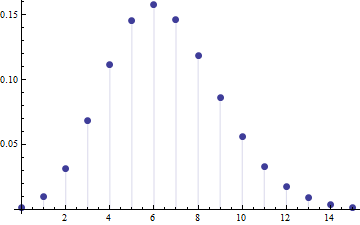I don't have a strong background in statistics, so forgive me if I'm making very elementary mistakes here or if this question is too simplistic.
I am in a club with ~80 members, and every week, 10 members are selected to win a prize.
No member can be selected to win a prize twice in a row, but other than that, anything goes. Some members are selected more often than others, though. For example, a few people are consistently selected as a winner pretty much every second or third week, while several others get picked only a few times a year. There's also a bunch of new members, so there's not enough data to know how often they will get picked (though they automatically get picked the week that they join).
I would like to make a program that would give a rough prediction of the chance that each member gets picked in the next week, and in the next month, based on previous data (I have records from every week for the past year).
Right now, my idea is to look at the gaps in between weeks that each member gets picked (e.g. "Annie"'s gaps are 3 3 3 3 3 2 4 3 4 3 5 7 4, so she usually gets picked at least once a month), and assume that this is a normal distribution. Then I look at how long has it been since she was last picked, to see what would be the next gap would be if she gets picked next week, and then look at the standard bell curve to determine the % chance that the next gap would be that value or lower (one-sided z-score).
The problem that I see is that this doesn't take into account the "no member will get picked twice in a row" rule (which may be significant for those who get picked very very often), and I am not sure how well the standard normal curve works for discrete values like number of weeks (as opposed to something like height, which can be).
Is my idea good enough to get at least something reasonably useful, or are there just too many issues with it? If so, is there an alternate model that I can use? Again, I'm not looking for anything rigorous or overly complicated (like Hidden Markov models and such) that takes everything into account perfectly, just something remotely useful to get me a rough idea of the upcoming picks.
EDIT:
Yes, there is some sort of mechanism where certain members consistently get a better chance of winning, but we don't know the exact details. It can be approximated by the analogy of "some people having more raffle tickets than others, but nobody knows how many tickets each member has in the raffle". The only information we have on the "weight" given to each member's chances is the past record of winnings.
In actuality, there's a lot of different factors that influence who will win the raffle for that week, but almost none of those details are known for sure. I am assuming that these factors remain constant over time, though in actuality this is not always the case. For example, a member could get banned from winning anything for several weeks if they broke certain rules and such... But it'd be impossible to come up with anything usable if we need to take that into account.

